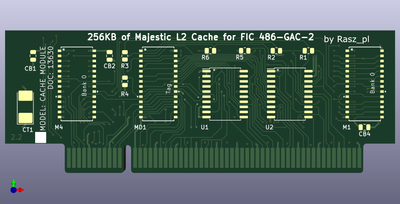👍 Happy new farther feelings 😁
miisalo wrote on 2024-02-28, 21:41:
I was expecting this being the most difficult of the whole endeavor Re: FIC 486-GAC-2 and mystery proprietary cache module - Help needed :
rasz_pl wrote on 2024-02-05, 01:56:Ironically I think power and ground on the cache connector itself are the only things I wont be able to deduce from images, every 4th pin is a ground stich, but might be power.
Luckily it was just few pins and not the whole thing flipped around 😀
edit: yep Re: FIC 486-GAC-2 and mystery proprietary cache module - Help needed majestyk was on point and I was confused 😀
miisalo wrote on 2024-02-28, 21:41:
but I was just measuring every effing pin just then and did not notice.
I was just thinking right now that tinted vias is not a good idea on a prototype 😀
miisalo wrote on 2024-02-28, 21:15:
Measured motherboard against schematics:
thank you, will incorporate in final version.
You want to hear something funny? While routing b48 (blue) it looked very wrong to me 😀 Wrong to the point I started scratching my head and questioning original designer. b48 trace sharply turns left before stitching to the ground plane, and the via it uses is right next to a50 track (orange) which is also supposed to be ground. Why would anyone design it like that and not make a50 track touch the via, why not just turn right instead (where the cursor is)?
The attachment b48.png is no longer available
but and the end I just deferred to original design and moved on 😐
miisalo wrote on 2024-02-28, 21:15:
And the result is booting machine with cache
Time for some benchmarks, cachechk and doom (fastdoom is easier to benchmark). Im really curious about 128/64KB difference, and if 64KB setting works at all.
miisalo wrote on 2024-02-28, 21:15:
This is probably fine as it is but going to add some wires there.
yeah, I wouldnt bother with wires, this excessive power/ground stitching is for lowering impedance, wires will probably make it worse.
Could I please trouble you for few photos of assembled module, both sides lose and in its final resting place installed in motherboard inside the case?
